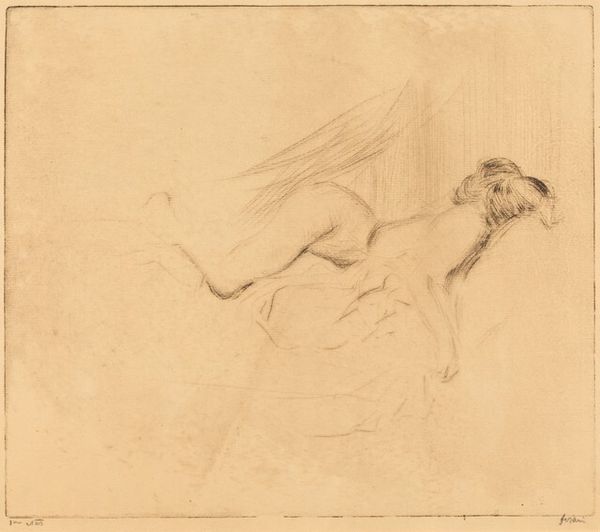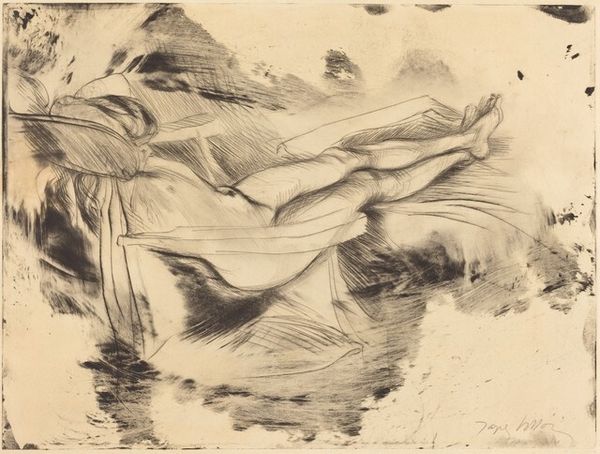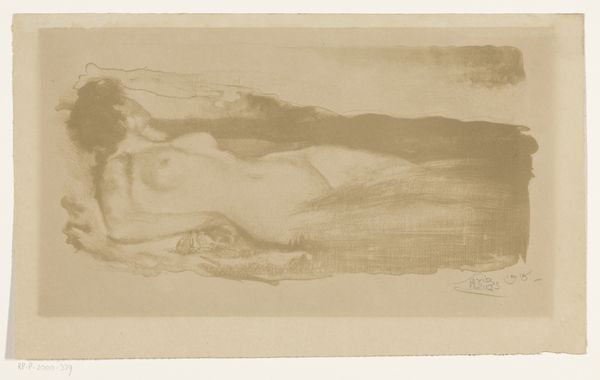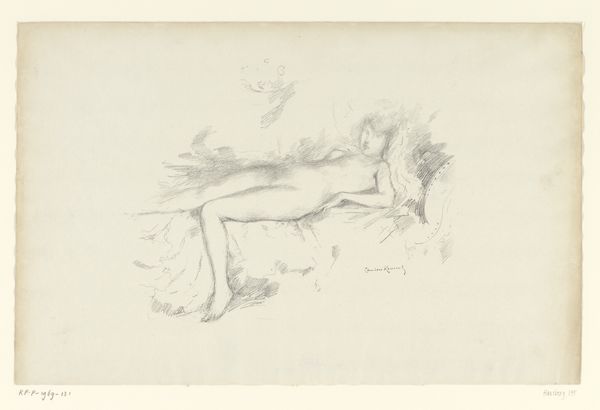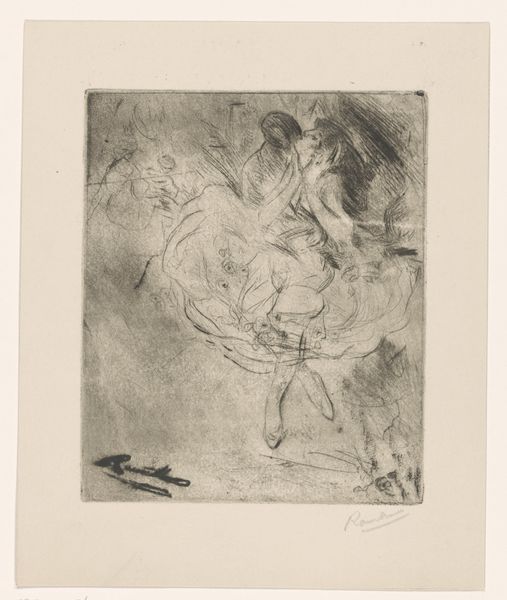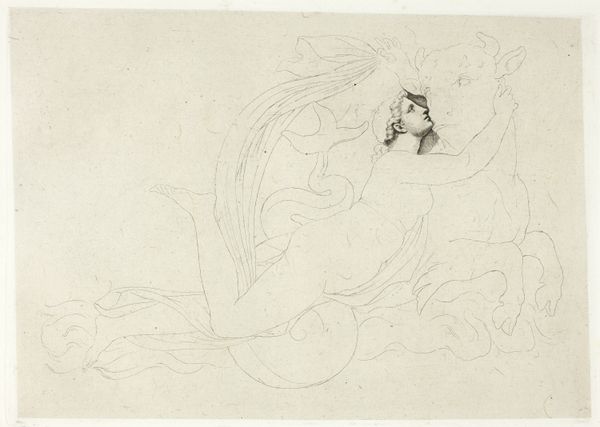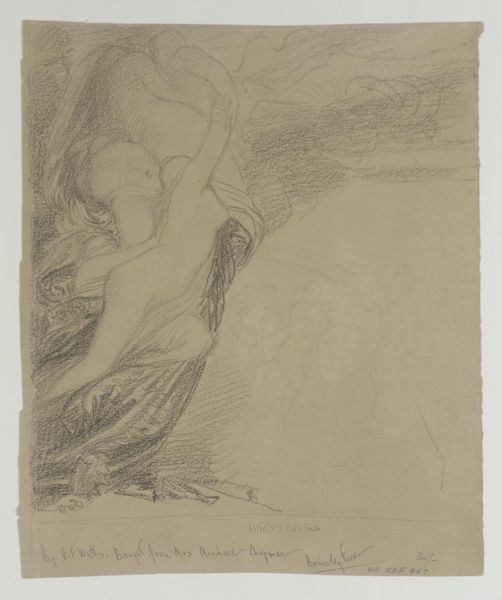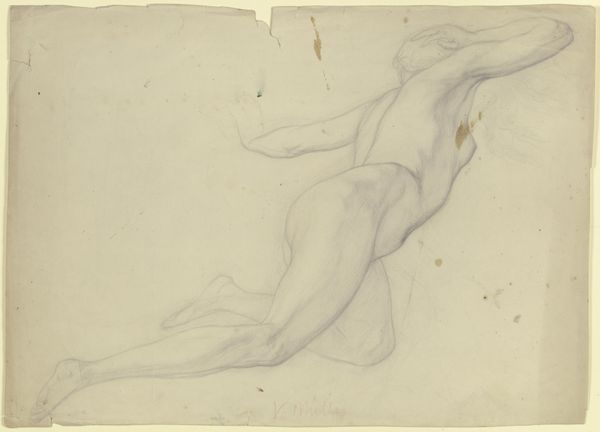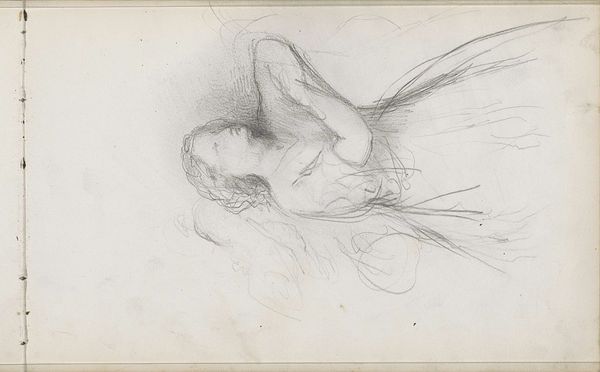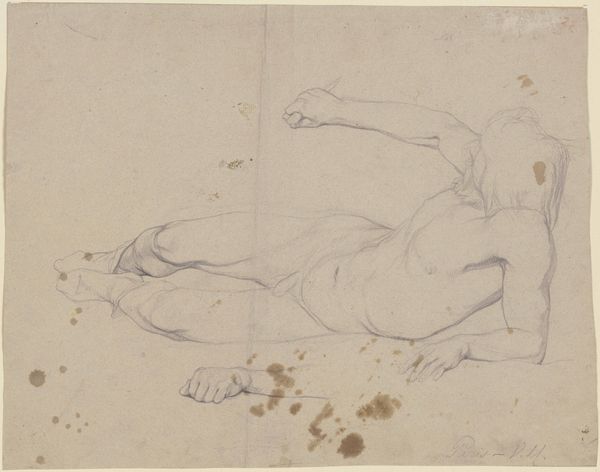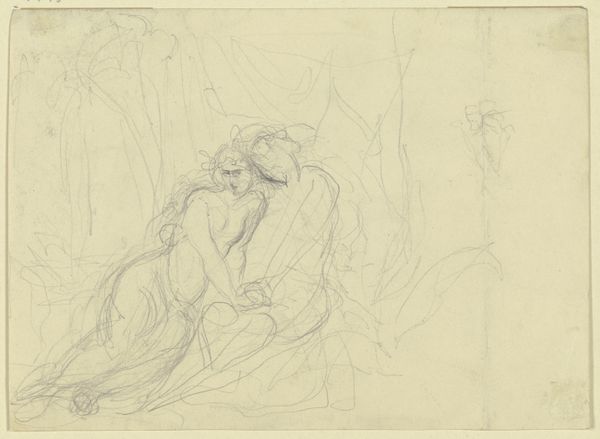
Minne étendue dans un rocking-chair (Minne Reclining in a Rocking Chair) 1907
0:00
0:00
drawing, print, pencil
#
portrait
#
drawing
#
art-nouveau
# print
#
figuration
#
pencil drawing
#
pencil
Dimensions: plate: 16.51 × 22.54 cm (6 1/2 × 8 7/8 in.) sheet: 20.64 × 28.26 cm (8 1/8 × 11 1/8 in.)
Copyright: National Gallery of Art: CC0 1.0
Editor: So, this is "Minne étendue dans un rocking-chair" or "Minne Reclining in a Rocking Chair" by Jacques Villon, created in 1907. It's a drawing and print, mostly done in pencil. The lines are so delicate and the subject seems so relaxed. What strikes you when you look at it? Curator: I immediately think about the labor inherent in creating prints at this time. Villon wasn't just sketching; he was involved in the entire production process. How did this meticulous, potentially repetitive work influence the final image, the final ‘product’, we are now consuming? The ‘art-nouveau’ label, is that really appropriate for work like this? It was such a commercial aesthetic and here we have this really intimate study, quite subdued. Editor: That’s interesting, the relationship between art and labour. So the artistic choice of using pencil as the material informs the experience and questions established movements, got it. It seems counter-intuitive that such meticulous labour resulted in this spontaneous study though. Curator: Consider, also, the intended audience and the societal implications of circulating images like this. Was this intended for mass consumption, or for a smaller circle of connoisseurs who would appreciate the process behind it? How does that distribution channel change our understanding of this drawing, now displayed for the masses? How might these printed reproductions have shaped the image of women and their role within contemporary French society? Editor: I see. The materiality isn't just about the aesthetic; it's connected to consumption, class, and social perceptions. Thinking about how prints circulated back then really changes my view of it! Curator: Exactly. It moves beyond just a depiction of a reclining woman, toward an understanding of art's function within the economy of image-making in the early 20th century. I might research some feminist commentary for this era. Editor: Okay, that’s insightful. I hadn't considered the production and circulation of the artwork and their relationship to women's social standing back then. Thanks, I will definitely do further research.
Comments
No comments
Be the first to comment and join the conversation on the ultimate creative platform.
